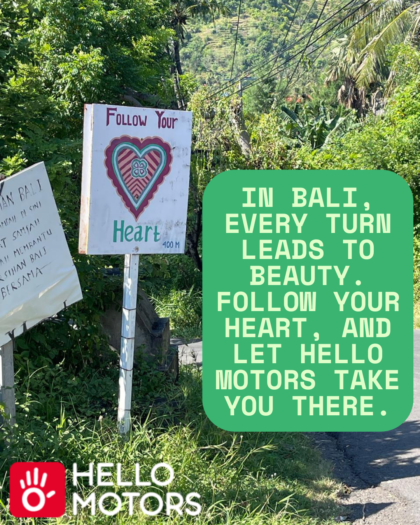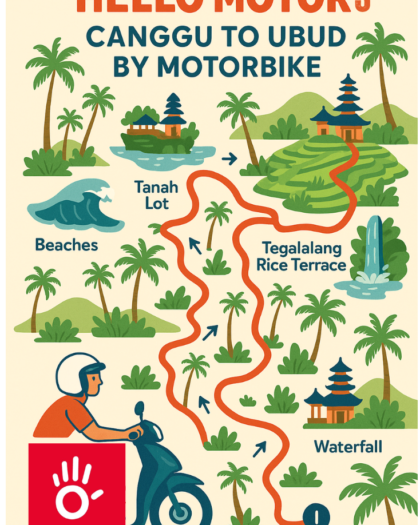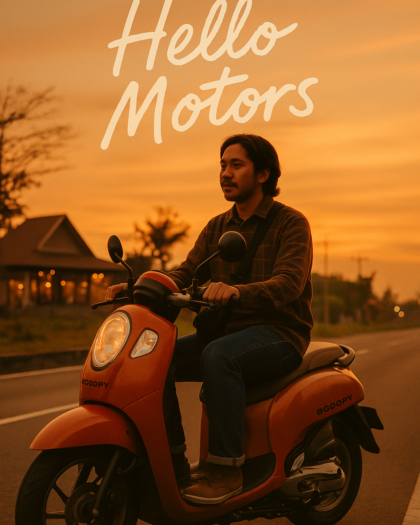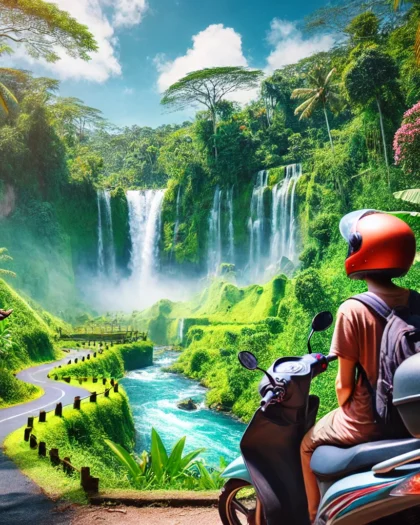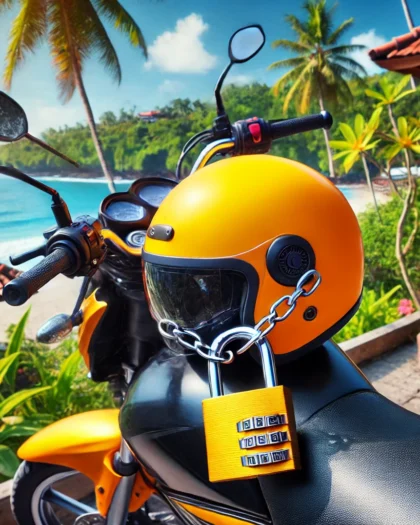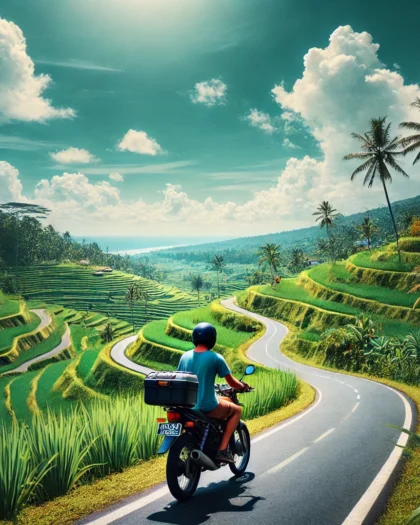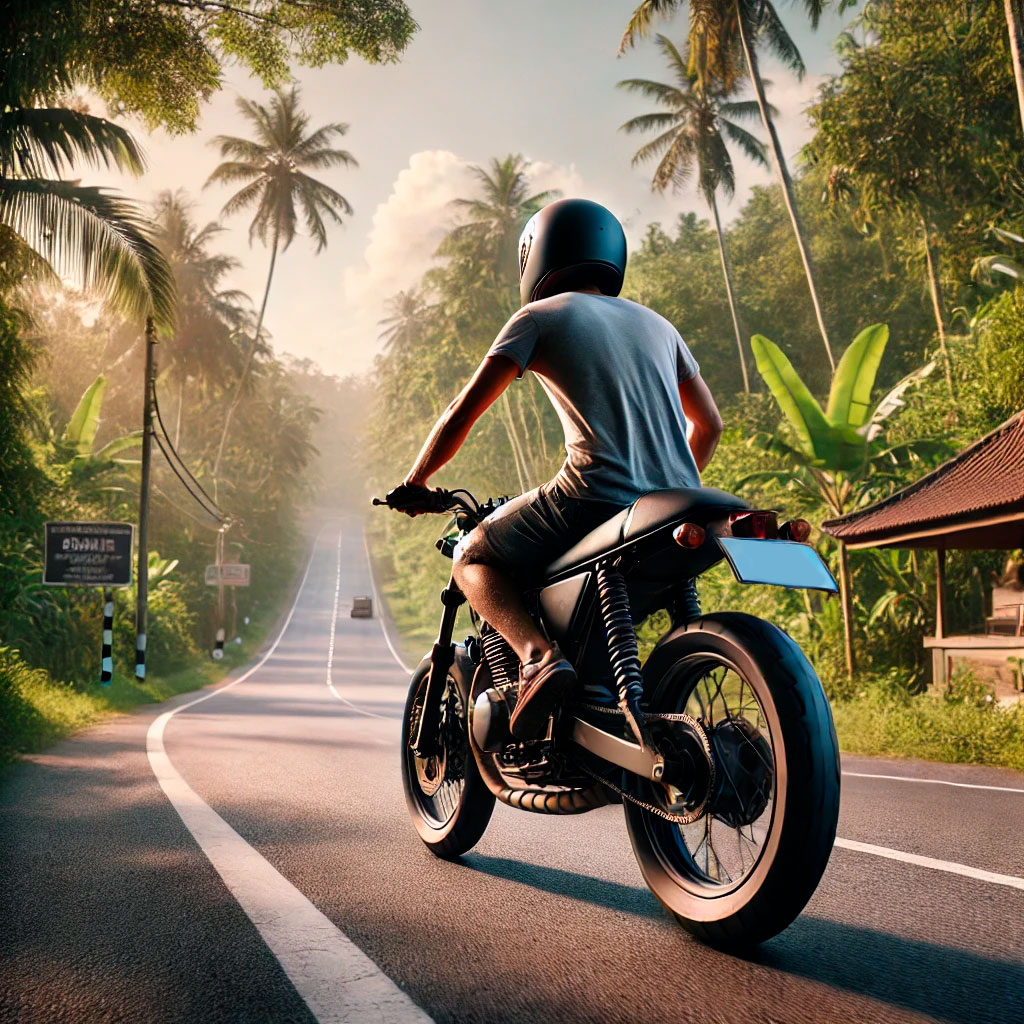
1. Left-Side Driving
The first thing to keep in mind when renting a motorcycle in Bali is that traffic flows on the left side of the road. If you’re used to right-side driving, it may take some time to adjust, especially at intersections and roundabouts.
2. Helmets Are Mandatory
Wearing a helmet is required by law in Bali for both the driver and the passenger. This rule is enforced strictly by the police, and it’s aimed at ensuring safety on the roads. Make sure your helmet fits well and is properly fastened.
3. Always Carry Your Documents
When driving in Bali, always carry your driver’s license (an international driving permit) and your motorcycle rental documents. The police frequently stop drivers for document checks, especially in tourist areas. You may face a fine if you don’t have the required documents.
4. Traffic Can Be Heavy
In popular tourist areas like Kuta, Seminyak, and Ubud, traffic can be very congested, especially during peak hours. Keep this in mind when planning your routes, and try to avoid traveling during rush hours (morning and evening).
5. Maneuverability Is Key
Motorcycles allow you to easily maneuver through traffic and avoid jams. Many local drivers use motorcycles to weave between cars or bypass congestion. However, be cautious and always watch out for other vehicles and pedestrians.
6. Use Horns Frequently
Local drivers often use their horns to signal to others on the road. Don’t be surprised if you hear frequent honking — it’s a normal practice in Bali. Horns are used to prevent accidents, especially on narrow roads.
7. Road Conditions Can Vary
Roads in Bali can vary widely, from well-paved highways to narrow, poorly lit village paths. Be careful on winding or uneven roads, especially after rain, as they can become slippery.
8. Parking Near Attractions
Parking in Bali is widely available, and for motorcycles, it’s often free or very cheap. However, in tourist areas near attractions or beaches, it’s always better to park in designated motorcycle parking areas.
9. Watch Out for Pedestrians and Animals
In Bali, pedestrians or even animals can unexpectedly appear on the roads, especially in rural areas. Be prepared for dogs, cats, or even cows crossing your path, so exercise caution on narrow roads and in villages.
10. Fuel and Gas Stations
Fuel stations are common in Bali, but in more remote areas, they can be harder to find. Gas is not only sold at stations but also in bottles at small local shops along the road. Always keep your fuel tank at least half full, especially if you’re heading into rural parts of the island.
Conclusion
Understanding Bali’s traffic rules and road conditions will help you navigate the island safely and comfortably. Follow the rules, stay alert, and your driving experience in Bali will become part of an unforgettable adventure.



